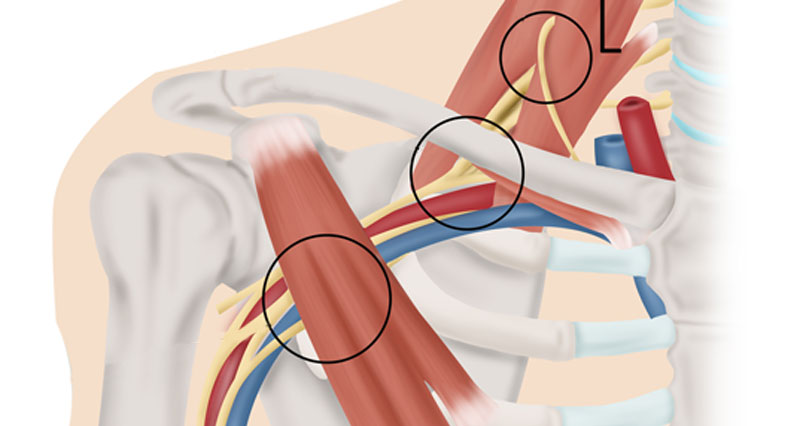

Nerve conduction study to check for nerve damage.Angiogram to check for how well blood is flowing through your blood vessels.Ultrasound of the upper arm blood vessels to check for narrowing or blockages.CT scan or MRI to rule out cervical spine impingement (a pinched nerve in your neck).X-ray of the chest to check for irregular bone growth, like a cervical rib (an extra first rib).This is why we sometimes order additional tests to confirm or rule out TOS as the cause of your symptoms. TOS symptoms can be similar to those of other conditions, like carpal tunnel syndrome. A physical exam that focuses on your hand and arm movement.A thorough review of your health history, including your current symptoms and past test results.Noticeably swollen veins in the chest, neck or shoulderĪt RUSH, we take the following steps to diagnose your symptoms:.

Edema (swelling) of the arm, hand or fingers.For example, they may worsen when you’re combing your hair or putting away dishes in upper kitchen cabinets. Increased discomfort or weakness when you raise your arm for extended periods of time.Tingling or numbness in your fingers, hand or arm.Pain or aches in your neck, back of the head or shoulder.You may experience various symptoms, depending on which of type of TOS you have. Injury: This includes old fractures of your collarbone and whiplash.And sports that could cause TOS include weightlifting, swimming or baseball. Some jobs that may put you at a higher risk include package couriers, hairstylists or auto mechanics. Repetitive motions of the arm and shoulder: Certain jobs or sports requiring heavy lifting or raised arms may irritate the nerves or vessels in your thoracic artery.These may be congenital (present at birth), or you may develop them over time. Anatomical (irregular) development: This includes a cervical rib (an extra first rib), or an extra or an irregular muscle in your neck.The following circumstances may increase your risk of developing TOS: They can diagnose and relieve symptoms unique to your TOS condition. Vascular surgeons at RUSH provide expert care for all types of TOS. Arterial TOS affects one of the arteries under your collarbone by causing an aneurysm (a bulging of the artery).This type may come on suddenly, often after unusual or exhaustive arm activity. Venous TOS affects the major veins in the lower neck and upper chest.Neurogenic TOS affects the nerves that regulate movement and feeling in your arm and hand.There are three types of TOS, depending on the particular nerves or blood vessels affected: TOS occurs when a bone or muscle narrows nerves and blood vessels in this passageway, preventing them from working properly. Thoracic outlet syndrome (TOS) affects nerves and blood vessels in your thoracic outlet - a passageway located just below your collarbone.


 0 kommentar(er)
0 kommentar(er)
